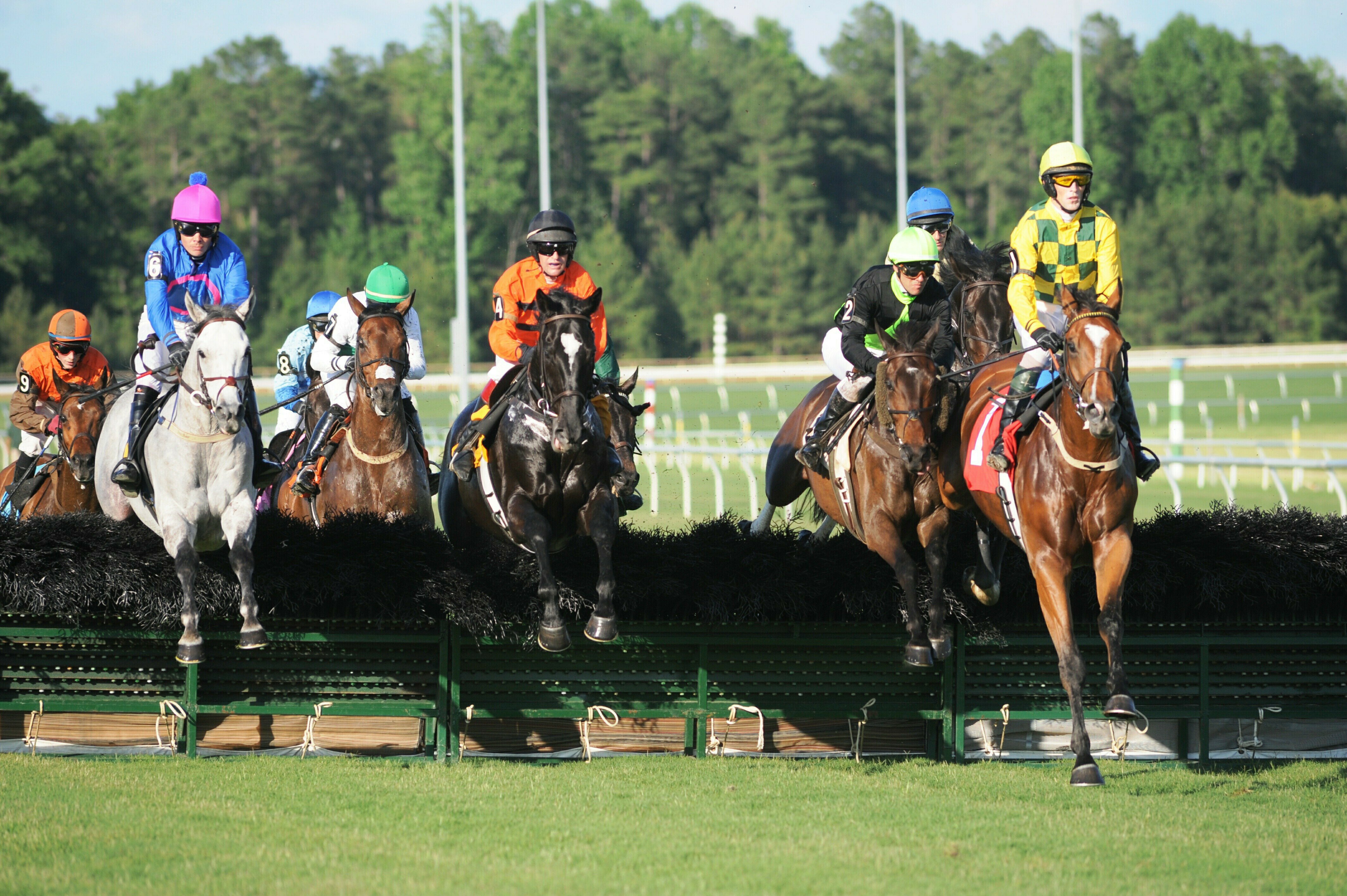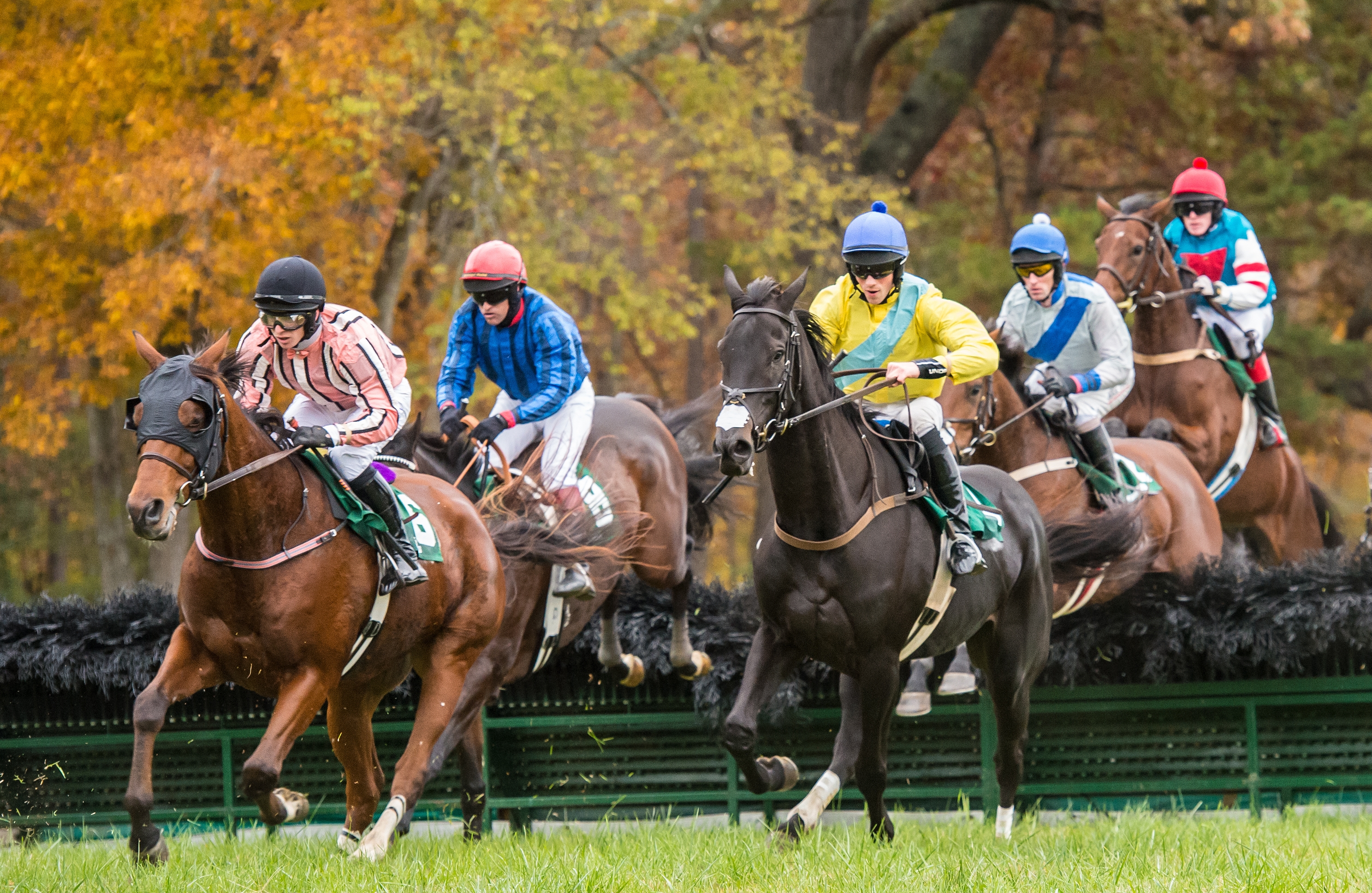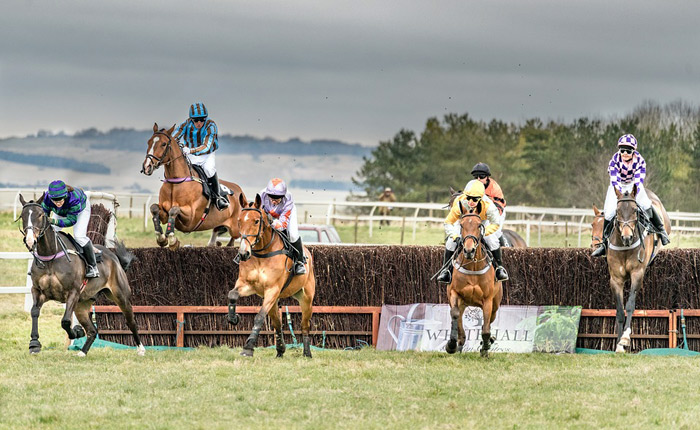History and Origins of Steeplechase Racing: Steeplechase Race

Steeplechase racing, a thrilling equestrian discipline, has a rich history that dates back centuries. Its origins are intertwined with the development of horse racing and the unique landscape of Ireland. The sport has evolved significantly over time, from its humble beginnings as a test of endurance and navigation to its current form as a highly competitive and strategic event.
Early Origins and Development, Steeplechase race
The origins of steeplechase racing can be traced back to the 18th century in Ireland. The sport emerged as a social pastime among the Irish gentry, who would often organize informal races across the countryside. These early races were not governed by any formal rules, and the distances and obstacles varied greatly. The name “steeplechase” is derived from the practice of using a prominent church steeple as a landmark to guide the riders.
- The first documented steeplechase race took place in 1752 in County Tipperary, Ireland. The race was held over a course of about four miles, and the winner was a horse named “The Gentleman.”
- The early races were often held over rough terrain, with obstacles such as ditches, fences, and streams. These obstacles were not standardized, and riders were expected to navigate them as best they could.
- The sport quickly gained popularity among the Irish gentry, and steeplechase races became a regular feature of social gatherings and sporting events.
The Rise of Organized Steeplechase Racing
The early 19th century saw the rise of organized steeplechase racing. The first steeplechase club was established in 1812 in England, and the sport quickly spread to other parts of the world. The introduction of standardized rules and courses helped to make steeplechase racing more competitive and exciting.
- The first major steeplechase race in England was the Grand National, which was first held in 1839. The Grand National is still considered one of the most prestigious and challenging steeplechase races in the world.
- The development of standardized obstacles, such as water jumps, fences, and ditches, made steeplechase racing more challenging and exciting.
- The introduction of jockeys, who were specifically trained to ride in steeplechase races, helped to improve the quality of the competition.
Steeplechase Racing in the Modern Era
Today, steeplechase racing is a highly competitive and popular equestrian discipline. The sport is governed by international organizations, such as the National Steeplechase Association in the United States and the Jockey Club in the United Kingdom. Steeplechase races are held around the world, and they attract some of the best riders and horses in the world.
- Modern steeplechase races are typically held over courses of two to four miles, with a variety of obstacles, including water jumps, fences, and ditches.
- The sport has evolved to include specialized equipment, such as lightweight saddles and protective gear for both horse and rider.
- Steeplechase racing is a challenging and exciting sport that requires a high level of skill and athleticism from both horse and rider.
Comparison with Other Equestrian Disciplines
Steeplechase racing is unique among equestrian disciplines due to its combination of speed, endurance, and skill. It differs from other equestrian disciplines, such as show jumping, dressage, and racing flat, in several key aspects:
- Distance: Steeplechase races are typically longer than other equestrian disciplines, requiring horses to maintain a high level of fitness and stamina.
- Obstacles: The presence of obstacles, such as water jumps and fences, adds a unique element of risk and strategy to steeplechase racing.
- Terrain: Steeplechase races are often held over rough terrain, which adds to the challenge for both horse and rider.
Steeplechase Course Design and Obstacles

The design of a steeplechase course is a critical element in the sport, influencing the race’s strategy, tactics, and ultimately, its outcome. It is a unique blend of endurance, agility, and courage, testing both horse and rider to their limits.
Steeplechase race – Steeplechase courses are characterized by their undulating terrain, incorporating natural features like hills, valleys, and sometimes even water jumps. The most prominent feature, however, is the presence of obstacles, which are strategically placed throughout the course to challenge both horse and rider.
Obstacles in Steeplechase Racing
The obstacles in steeplechase racing are not mere hurdles; they are designed to test the horse’s jumping ability and the rider’s skill and courage. The most common types of obstacles include:
- Fences: These are the most basic obstacles, typically constructed from wooden rails or brush, ranging in height from 3 to 5 feet. Fences are often set on a slight incline, adding to the challenge.
- Water Jumps: These are the most dramatic obstacles, requiring horses to leap over a ditch filled with water. The width and depth of the water jump vary, but they are always a significant test of a horse’s athleticism and courage.
- Open Ditches: These are similar to water jumps but without the water, presenting a challenge to horses with their unique landing mechanics.
- Walls: These are solid, vertical barriers, usually made of brick or stone, that require a horse to jump up and over. Walls are often the most intimidating obstacle, requiring a combination of strength, agility, and courage.
Impact of Course Design on Race Strategy and Tactics
The design of the course has a significant impact on race strategy and tactics. Riders must carefully consider the terrain and obstacles, as well as the strengths and weaknesses of their horses, to develop a winning strategy. Some key factors to consider include:
- Terrain: A course with a lot of hills will favor horses with strong stamina and a good turn of foot. A flat course will favor horses with speed and agility.
- Obstacles: Riders must consider the type and location of the obstacles when developing their strategy. For example, a horse that is a good jumper but lacks stamina might be better suited to a course with fewer obstacles.
- Pace: The pace of the race is also an important factor to consider. Riders must decide whether to go out fast and try to establish an early lead, or to conserve energy and make a late run.
- Positioning: Riders must also consider their positioning in the field. It is important to be in a good position to jump the obstacles safely and effectively.
The design of the steeplechase course, with its challenging terrain and obstacles, makes it a truly unique and exciting sport. It requires both horse and rider to work in perfect harmony, combining athleticism, skill, and courage to achieve success.
Steeplechase Racing Techniques and Strategies

Steeplechase racing demands a unique blend of skill, strategy, and athleticism from both horse and rider. The challenges posed by the course’s obstacles require specific techniques and a strong partnership between horse and jockey. This section delves into the techniques and strategies employed in steeplechase racing, highlighting the crucial role of teamwork and adaptability.
Horse and Rider Partnership
The bond between horse and rider is paramount in steeplechase racing. The jockey must have complete trust in their mount’s ability to navigate the obstacles and maintain a steady pace. This trust is built through rigorous training and practice, allowing the horse and rider to develop a seamless understanding of each other’s movements and reactions.
- Communication and Trust: Effective communication between horse and rider is vital. The jockey uses subtle cues, such as leg pressure and rein adjustments, to guide the horse over obstacles and maintain a strategic position. This communication, coupled with mutual trust, enables the horse to anticipate the jockey’s intentions and respond accordingly.
- Shared Focus and Determination: Both horse and rider must maintain focus and determination throughout the race. The obstacles present a constant challenge, demanding mental resilience and a shared commitment to success. The jockey’s encouragement and the horse’s instinctive drive combine to fuel their shared pursuit of victory.
Navigating Obstacles
Steeplechase courses are designed with a variety of obstacles, each presenting unique challenges. Jockeys must employ specific techniques to navigate these obstacles safely and efficiently.
- Approaching the Fence: The jockey must approach the fence with a controlled pace and a clear plan. The horse’s stride needs to be adjusted to ensure a smooth takeoff and landing. The jockey may use their body weight to help the horse clear the fence, maintaining balance and stability.
- Jumping Technique: The horse’s jumping technique is crucial. The horse should approach the fence with a balanced stride, taking off smoothly and clearing the obstacle with ample clearance. The jockey’s position, maintaining a balanced posture and using their hands effectively, plays a vital role in guiding the horse over the fence.
- Water Jump: The water jump is a challenging obstacle that requires both horse and rider to maintain their composure. The jockey must guide the horse through the water with confidence, ensuring a smooth and controlled entry and exit. The horse’s ability to swim and its willingness to engage with the water are essential for success.
Strategies for Success
Jockeys employ a variety of strategies to gain an advantage in steeplechase racing. These strategies involve navigating the course effectively, conserving energy, and making strategic decisions based on the race’s dynamics.
- Pace Management: Steeplechase races are often characterized by a fast pace, requiring jockeys to manage their horse’s energy effectively. The jockey must find a balance between maintaining a competitive speed and conserving energy for the final stages of the race. A well-paced strategy allows the horse to maintain its strength and endurance, crucial for navigating the obstacles and finishing strong.
- Obstacle Positioning: The position at which a jockey approaches an obstacle can significantly impact their success. Jockeys often aim to approach the obstacle from a position that allows for a clear jump and a smooth landing. This strategy minimizes the risk of mistakes and maximizes the horse’s chances of clearing the obstacle efficiently.
- Tactical Decisions: Steeplechase races often involve jockeying for position and strategic maneuvering. Jockeys must make tactical decisions based on the race’s dynamics, such as choosing the best path through the field and anticipating the moves of other riders. These decisions require a keen understanding of the course, the strengths and weaknesses of their own horse, and the strategies of their competitors.
The steeplechase is a thrilling race that tests both speed and endurance. Runners must navigate challenging obstacles, including high hurdles and water jumps, making it a true test of athleticism. One of the most celebrated steeplechase runners is Soufiane El Bakkali , a Moroccan athlete known for his exceptional speed and tactical prowess.
El Bakkali’s dominance in the steeplechase has made him a fan favorite and a true inspiration for aspiring runners.
The steeplechase race, with its hurdles and water jumps, demands a unique combination of speed and endurance. It’s a test of grit and determination, much like the career of carmelo anthony , who consistently battled through adversity to become one of the NBA’s most prolific scorers.
Both the steeplechase and Anthony’s career showcase the power of perseverance and the thrill of overcoming challenges.